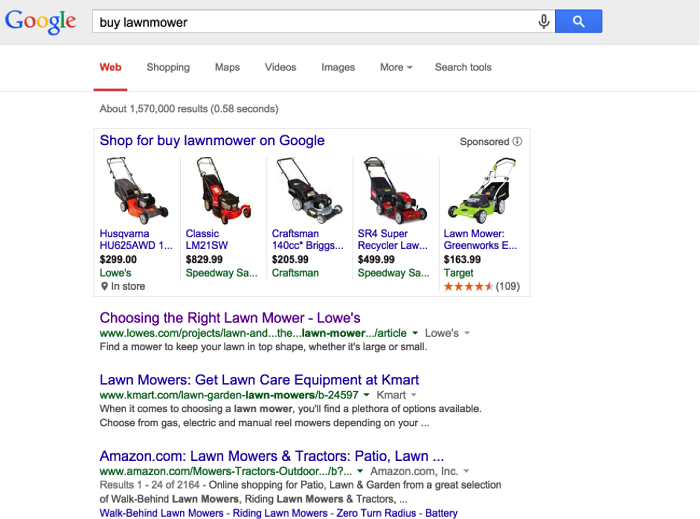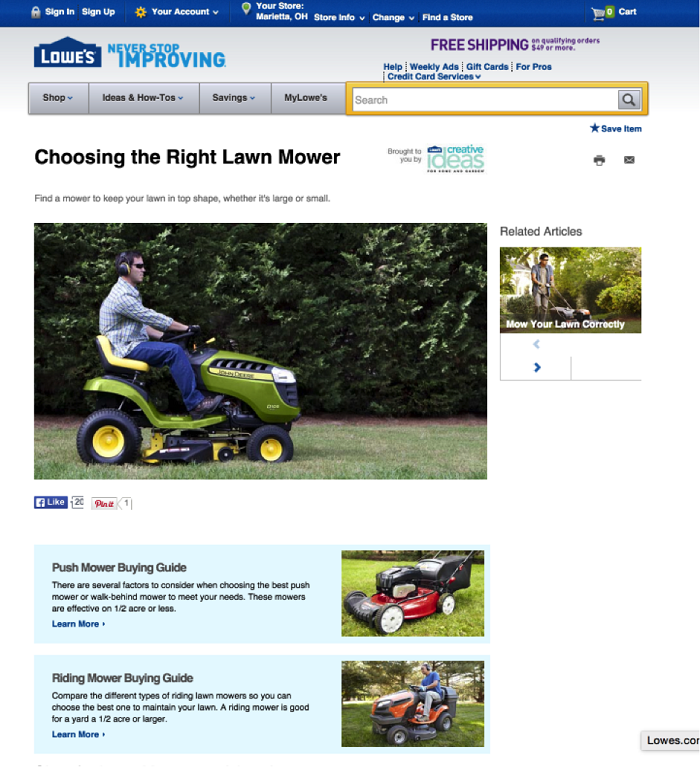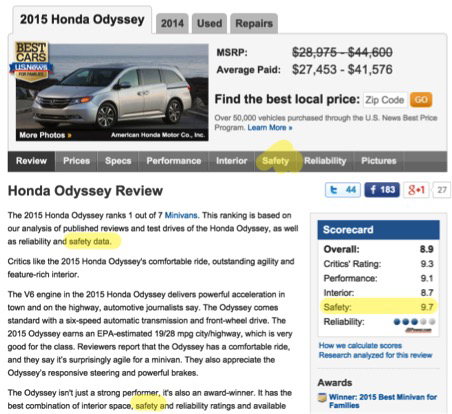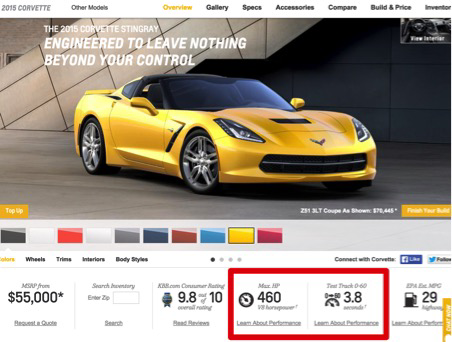How to manage user motivation in online sales

What is behind the human decisions to buy a particular product? Every marketer would like to know. The millionth army of advertisers and sellers is trying to persuade, "cajole", manipulate. Mathematic analysis, psychology and even a little metaphysics are used. It seems to be all on science, and at times similar to the rituals of the Polynesian aboriginal aircraft fans)
Understanding consumer psychology secrets with Jeremy Smith, conversion optimization expert. In his publication, he says an amazing thing.
')
Effective marketing is not the "chips" of increasing conversion, but penetration into the mind of the consumer.
According to Jeremy, he is killed when conversion optimization is reduced to statistical confidence, testing the color of the buttons and the size of the images. Are they not important? Yes, but secondarily. The most important thing is to understand the motivation behind it.
Motivation is why we do what we do. Everything. Why do we wake up in the morning, go to work, build a career, go to the cinema, play sports, and so on. She explains every step, including the purchasing decision. Just because we do not choose anything, even toothpaste. There are reasons for this.
As an example - buy a lawn mower.

Why do people buy lawn mowers? It would seem that everything is simple: there is a plot on which the grass has grown, it is necessary to cut it. For what? Overgrown lawn makes the look of all possession untidy. Why doesn't the landlord want his property to look untidy? He takes care of what the neighbors think. Because it seeks respect and attention from the inner circle. This is part of social recognition, one of the basic human needs.
At the same time there is a mixture of internal and external factors of motivation.
Imagine a specific person. He wants to choose a reliable model of lawn mower, which will make the appearance of his plot as attractive as possible. This is an external reason. And so that his neighbors know: he is a strong man, he knows how to handle a heavy machine. And also, that she was easy to manage, because he is not "friends" with technology. These are internal reasons, on which the choice of a specific model already depends.
Let's look at the product page of one of the online stores selling equipment:

The target audience is those who have never dealt with lawn mowers before, do not know the technical characteristics and want to know all the details.
Title: "Choosing the right lawnmower." It falls into the desire to make a reliable choice (the technique is quite expensive, not for one season).
Images: show both the owners and those who provide lawn mowing services (two groups of the target audience).
Link to the article: "Cut your lawn properly." Educational content allows the buyer to become a kind of expert: "I already know something and I understand." This creates credibility to the seller and further enhances the desire to have an attractive lawn.
Two types of motivation
This is a negative and positive motivation. In the first case - "I do not want this to happen to me."
For example, none of the motorists would like to find themselves in this situation:

For the traffic police inspector, it does not matter how much you exceeded your speed, at least half a kilometer. Get fine.
And this is how it works on the Ford website:

"The new Ford S-Max is equipped with a smart speed limiter." This is a negative motivation for those who do not want to receive fines.
How does the positive motivation in the same automotive topics? The Ford S-Max has a mechanism that creates an “ideal temperature.” It promises a comfortable trip in any weather, in any climate. Motivation to achieve.

Both positive and negative motives influence the choice with equal force. It's all about the product.
For example, when choosing a car, the client pays great attention to safety, which is connected with the instinct of self-preservation. Therefore, automakers spend billions on research and development to increase safety. On the other hand, the speed (drive) and prestige associated with self-esteem, social recognition. And car industry marketing perfectly combines these things.
What form of motivation to choose in a particular case depends on the type of buyer. What is important for this particular person? For example, for a woman with small children in the first place is a question of security plus comfort. And for a young ambitious man - the speed and "frills".
On the Honda Odissey page, safety is emphasized:

And on the Corvette Chevrolet page, the maximum speed and acceleration time. Well, of course, status, the lust for cool things:

As a rule, a certain type of motivation dominates. He decides the choice. The task of marketers is to make a psychograph of the target audience in order to pull out the true need. Why do these people have this particular product?
Internal and external strength of motivation
Intrinsic motivation is the desire to fulfill personal needs. Let's say I want a skateboard because I love the feeling of movement. External - so that people think that I am a “cool sports dude”.
Money is the most significant external force of motivation. But by itself, it does not work. It is necessary to continue: "thanks to this you can afford ..."
The ratio of the two forces is best seen on Maslow's famous pyramid:

In the offer must be a fusion of all the forces of motivation. Of course, the easiest way to identify and manage the outside. The inner is usually neglected. However, a study by experts of Marketing profs says that people respond most favorably to internal motives in advertising.
Commentary by the head of Yagla.ru Alexander Alimov
To determine the hidden motives you can study the behavioral factors: entry point, time of stay, views, refusals, clicks, scrolling. This is valuable information, but it speaks about the user's needs only indirectly.
We use a different approach: we “pull out” the need from a query in a search engine. For example, requests "Buy a used laptop", "Buy a laptop in installments without overpayment" talk about the external level: a person is looking for the price, wants to save.
But when a user scores specific parameters: “Buy a laptop with a nvidia geforce gtx 780m video card”, “Buy a laptop with 1 terabyte of memory” or “Buy a pink laptop”, this is already a status level.
Finally, the requests "Laptop for the designer (photographer)" - the level of creative needs.
What to do with it? In 99% of cases, all requests lead to the same landing page. And on price, and on status, and on creative needs. With the help of the Yagla service , we substitute an offer in the header for user requests from contextual advertising. As a result, a person sees a proposal as close as possible to his need.
For example, under the request “Laptop for Designer”, we show the title “Create a Super Design with an ABC Laptop. 3D graphics, 1 TB disk + free home delivery. ” Thus, we close both the internal and external levels - powerful characteristics, saving on delivery (of course, the proposal in the title should really correspond to what the seller gives).
It is even better to make a comprehensive personalization: in addition to the heading / subtitle, write a small paragraph with benefits for a specific audience + add an indication in the item cards (“this model is great for designers because ...”)
How personalization of the landing page allowed one of our clients to increase conversion by 3 times in 1.5 months, see this article .
Plus the case of an online clothing store, where the personalization of product categories using dynamic content increased the conversion into orders by 2.4 times.
Source: https://habr.com/ru/post/293020/
All Articles